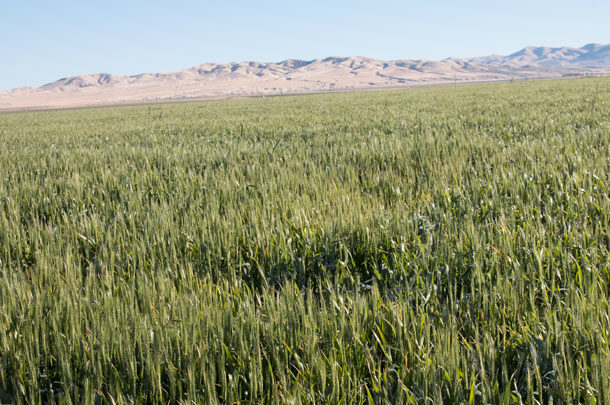With all these variables to be accounted for, it can be difficult to determine what will and will not work for you. So, whether you’re thinking about adding cover crops or looking to make some adjustments to your current cover-cropping system, there is always something to glean from those who have made it work through trial and error.
Below, I have asked two producers if they would touch on their grazing systems and some of their successes. Here is what they said:
- Rulon Spear from Raft River, Idaho, farms about 2,000 acres and runs close to 350 beef cows. Of that acreage, 800 has been planted in cover crops for the last four years and grazed during winter and early spring.
- Brit Hayes operates Hayes Red Angus in Jetmore, Kansas. A 400-head purebred and commercial operation, Hayes has used cover crops as a source for winter grazing for the last two years.
Why did you decide to add cover crops to your grazing system?
Spear: We decided to add cover crops to our grazing system for a few different reasons. Mainly, it was to save money on the cost of feed. We started with just a few acres in the beginning, and the cows enjoyed it so much they were just packed into those acres. We have grown the acres immensely in the past few years, and we can now feed over 300 cows and some calves for four-and-a-half months without having to supplement with anything else.
Hayes: I like to let my cows take care of themselves, but here in western Kansas, it takes a lot of grass to carry cows through the winter. Having fallow acres close to our winter pastures made me think I could run more cows and provide added protein to help condition the cows after weaning and prior to calving.

What cover crops have worked well for you?
Spear: We mainly use annual rye, volunteer wheat, purple-top turnips and eco-till radishes. We have tried others, peas and clovers, in the past – and we could never get a stand.
Hayes: I plant spring oats, barley, sorghum, radishes and sunflowers. This worked really well on our yearling replacement heifers last year. We grazed them for 60 days, and the heifers did really well. This year, I planted the same mixture on Aug. 15 and 16. We had 4/10 inches of rain after planting, which helped us get a good stand, and then we haven’t had rain since.
The oats and barley are really stressed. We have good subsoil moisture, but it’s really dry on top. The radish rooted down to moisture and really flourished. If it doesn't rain, we won't be grazing it, but it’s continuing to build the soil composition. I have farmed for 40 years and cannot remember seeing this little rain during these months. The oats and barley have had no rain to grow roots.
I have also used millet and sorghum after wheat harvest with peas and turnips and sunflowers. Cows were turned in after weaning in September, and this worked well.
How has your cover crop system evolved over time?
Spear: Four years ago, we started with 20 acres, and we saw so many positive outcomes that we now have about 1,200 acres planted into some kind of cover crop. We hope to get our whole farm into cover crops in the future. We have tried different crops, and we are still experimenting with different crops that both the cows will eat and will be beneficial for our soils.
Hayes: I still have a lot to learn, and what works well one year may not be the best for the next year. The only difference in the last two years of grazing cover crops is: We received 1 inch of rain the first of October. I think cover crops can help build the soil profile and add excellent forage for your cattle to graze.

What has been the biggest benefit of adding cover crops to your grazing?
Spear: The cost has been the biggest benefit. We can save over $70,000 a year on just feed. The cows and calves also gain plenty of weight and are very healthy. They are very fat when they leave in March.
Hayes: The biggest benefit would be raising forage for the cows but still building the soil for future years.
What tips do you have for other beef producers looking to add covers to their grazing system?
Spear: We have found no downsides to planting cover crops. They are beneficial to the animals, the soils, the following crops and the water. It can't hurt to try.
Hayes: Be open-minded; don't lock yourself into one mixture. What works one year may not be the best for the next year. The cost of seed is really reasonable for the return. This saves spraying in no-till. ![]()

-
Cassidy Woolsey
- Editor
- Progressive Forage
- Email Cassidy Woolsey
PHOTO 1: Rulon Spear's cover crop mixture of volunteer wheat, radishes, turnips and annual rye grass planted primarily for grazing. Staff photo.
PHOTO 2: Brit Hayes' field planted in spring barley, oats, radish, sunflower and sorghum. The field was planted Aug. 15 and the photo was taken Nov. 9.
PHOTO 3: Brit Hayes' cattle grazing a millet mixture last fall. Photos by Brit Hayes.











